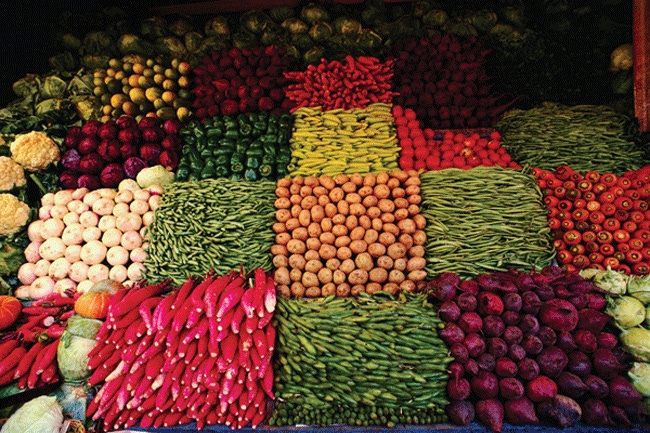May 9, 2011

Producers of U.S. fresh-market vegetables are expected to harvest 193,680 acres this spring, up 1 percent over the previous growing season.
Prospective area was up for just four of the 11 crops with the greatest percentage gains for carrots and tomatoes, according to the latest USDA Melons and Vegetables Outlook.
In California, periods of cool, wet weather slowed planting progress, crop maturity, and reduced the average size of early spring crops such as lettuce and cauliflower. With an above-average snowpack again this year and above-average rainfall in some areas of central California, the drought in California has eased considerably with Central Valley irrigation water supplies much improved. Both federal and state water allocations have been increased this year, which could reduce costs, increase yields, and allow more area to be planted.
In Florida, growers expect to harvest 38 percent of U.S. spring area for the 11 selected crops. Florida’s area is expected to rise 3 percent from a year ago due to increased area for cabbage, sweet corn, tomatoes and snap beans.
Florida growers expect to harvest fewer acres of cucumbers and bell peppers — crops which collectively account for about one-fifth of the state’s reported spring vegetable area.
Area for sweet corn, which accounts for about 40 percent of the reported spring vegetable area, is expected to rise 5 percent to 29,000 acres — the largest area devoted to spring sweet corn since 1997.
The increase in sweet corn area reflects strong prices this past winter (for the few that had product to sell) and generally favorable returns last spring.
Also this year, area planted to all fresh bulb onions is forecast to rise 2 percent to 158,860 acres. Most of the gain is expected to come from the spring season where high prices last year encouraged a 16-percent surge in area.
Planted area is expected to decline in summer non-storage onion states and remain about even in states that produce storage onions.
Area was forecast to be larger in all three reporting spring onion states with both Texas and Georgia each expected to harvest the most area since 2006. Prior to this year, spring onion area in Texas had declined for four consecutive years.
Yields could be better
Assuming no further weather anomalies this spring, yields could exceed those of a year earlier, which could potentially push production of spring onions up by as much as one-third.
Spring growers entered an onion market that was already crowded with heavy imports from Mexico (expected to continue into early May) and the remaining domestic storage onions from the 2010 season.
As a result, spring onion prices, which are already weak, are expected to average well below the extreme highs experienced a year earlier.
After experiencing a winter that will not soon be forgotten, the fresh-market vegetable industry welcomed spring. Although domestic supplies are increasing, the supply of many crops from Mexico remains well below average following the unusually heavy February freeze.
However, the market share commanded by imports generally declines as spring progresses and more domestic sources begin to ship.
In mid-April, import volume from Mexico was running well below a year earlier for crops such as sweet corn, cucumbers, eggplant, bell peppers and tomatoes, while imports were above a year earlier for crops such as carrots, bulb onions, green onions, peas, chile peppers, squash and watermelons.
In Florida, despite hot, dry weather punctuated by periods of heavy rains and winds, spring crops appear to be largely on schedule with improved supplies in late March and early April set to expand to full normal volume for most crops in May.
Heavy rains in late March and excessive heat in early April may lead to some temporary market gaps from central Florida in early May due to the impact on plant blooms (drops or no set) for crops such as tomatoes and peppers. Aside from this issue, Florida’s volume is expected to exceed that of a year earlier. And with import volume remaining below average, domestic fresh vegetable supplies are expected to account for a greater share of the market this spring.
As unsettled early spring weather gives way to more summer-like conditions, vegetable crop yields are expected to improve and supplies will become steadier.
Although variable yields and seasonally declining imports could keep upward pressure on some vegetable markets through mid-May, U.S. spring-season grower/shipper prices for commercial fresh vegetables are expected to average well below the high levels experienced a year earlier.
Grower/shipper prices this spring are expected to average lower for crops such as onions, sweet corn, lettuce and cauliflower while averaging higher for carrots, cucumbers and celery.
About the Author(s)
You May Also Like




